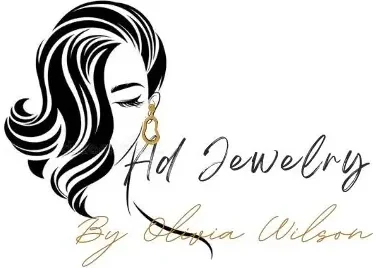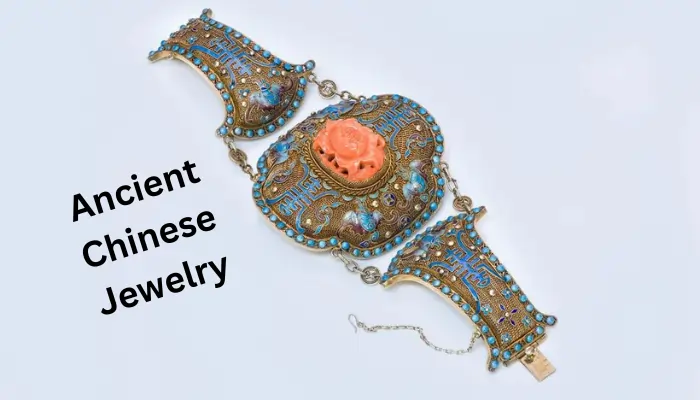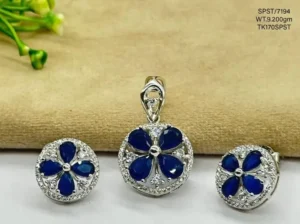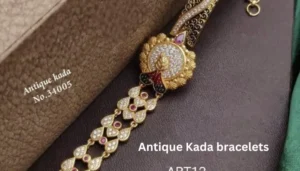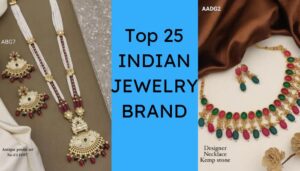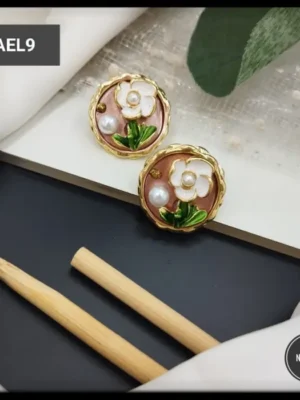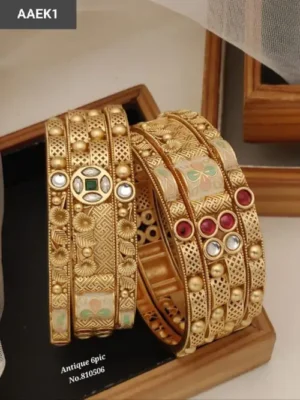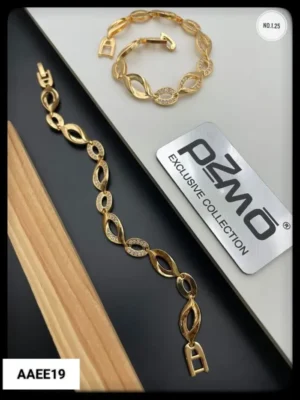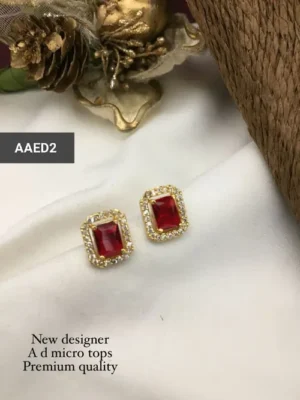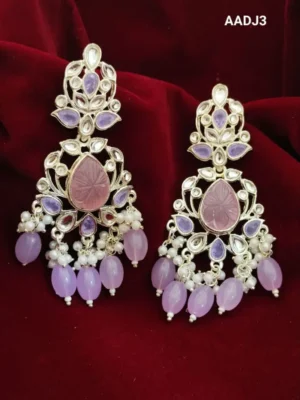Ancient Chinese jewellery is a stunning testament to the beauty and craftsmanship of Chinese culture. With its history stretching back to 5000 BC, Chinese jewellery has been an essential part of the country’s culture and has even been buried with the dead as part of their wealth.
From intricate carvings to ornate designs, Chinese jewellery has been a source of inspiration for many centuries. In this blog post, we will explore the beauty and history of Ancient Chinese jewellery and its impact on today’s world.
The Beginnings of Jewelry in China
Jewellery has been around for centuries in China, with a history that dates back thousands of years. Evidence of jewellery dates back to the Neolithic period in China, around 5000 BC. During this period, jewellery was made from bone, jade, turquoise, and other natural materials.
Jewellery-making was part of the culture and was used to indicate social status and wealth and to protect against evil spirits.
Burying a person’s wealth with their body became popular in China during the Shang dynasty.
As a result, many beautiful jewellery pieces have been preserved and can be seen today in museums and private collections. Other jewellery styles, such as hairpins, earrings, and necklaces, were also popular during this period.
In the Han dynasty, there was a shift towards more elaborate and intricate designs. Gold, silver, pearls, and precious stones created complicated and beautiful jewellery pieces.
During this period, China began to develop a distinct style of jewellery that continues to influence modern designs. The History of Chinese Jewelry is full of remarkable works of art that reflect the culture’s long history and vibrant culture.
Common Materials Used
One of the most prominent materials used in jewellery-making during the history of China was jade, which was so highly valued that it was sometimes referred to as an “imperial gem.” Jade was also found to be a gorgeous stone, so it became a popular choice for many royal ornaments and Chinese emperor and empress paintings.
Silver, bronze, gold, and copper were also commonly used in Chinese jewellery, with silver and gold being used in more intricate pieces like necklaces and brooches.
Semi-precious stones such as turquoise, coral, and lapis lazuli were also popular choices for Chinese jewelry, adding an extra level of beauty and symbolism.
Traditional Styles
Jewelry was an integral part of traditional Chinese culture, with many different styles and techniques used over the centuries.
Designs were often influenced by the history of Chinese jewelry, such as Chinese emperor and empress paintings, or by the philosophy of Confucianism, Taoism, and Buddhism. Popular pieces included jade bracelets, amulets and rings, symbolizing wealth and status.
People also wore pendants and earrings, often crafted from gold and silver. Intricately carved jewels were another popular choice and could take the form of animals, characters from legends, or designs inspired by nature.
Symbols such as dragons and phoenixes or depictions of mountains and rivers were common motifs. Whatever the strategy, jewelry was an important part of Chinese culture and would have been appreciated for its beauty and symbolism.
Burial Practices
In the History of Chinese Jewelry, a particular practice has become popularized in the archaeological record: burial with one’s wealth. Ancient Chinese emperors and empresses were often buried with jewelry, commonly depicted in their paintings.
This practice ensured they had access to their wealth in the afterlife. These jewelry pieces often included necklaces, rings, earrings, jade, gold, and silver belts.
Burial customs also varied according to social class—while the wealthy were buried with their jewelry, poorer individuals were not. Jewelry pieces were an essential part of the ceremonial practices to honor the deceased and commemorate their lives.
Modern Chinese Jewelry
The history of Chinese jewelry has evolved dramatically over the years, with modern designs being influenced by various cultures and art. Today, many Chinese jewelry makers use traditional motifs, such as dragons, birds, and even Chinese emperor and empress paintings, to create unique and stunning pieces.
There is also a great emphasis on craftsmanship, with intricate details such as filigree and granulation providing texture and sophistication. Modern Chinese jewelry makers often incorporate gemstones, precious metals, and other materials to add color and interest.
In addition to these traditional materials, newer designs may feature enameling and lacquer work, offering the wearer a more contemporary look.
With its long and varied history, Chinese jewelry continues to be popular today. Its timeless beauty, craftsmanship, and symbolism make it a timeless addition to any wardrobe.
Types of Chinese Jewelry
1. Rings
Ancient Chinese jewelry was well-known for its intricate and beautiful rings. Rings were traditionally made of gold, silver, jade, and other precious stones. During the Neolithic period, people would craft rings out of bone and teeth to be worn as symbols of commitment or marriage.
In the Southern Song Dynasty, rings were worn as a sign of marriage and would signify the couple’s social status – grand officers wore gold rings, while farmers wore silver or jade-like stones. This practice continues today with modernized rings in various designs and materials.
Rings are still popular for Ancient Chinese jewelry; many wear them as a symbol of beauty and a reminder of their marital status. Depending on which finger the ring is worn on, it can signify engagement or marriage.
3. Hairpins
Hairpins are traditional Chinese jewelry that Chinese women have worn since ancient times. They have been found in the tombs of emperors and empresses and even in paintings of these royal figures.
The materials used to make hairpins reflect the wearer’s social status, with more intricate and precious designs typically indicative of higher rank. Gold, silver, ivory, bronze, bamboo, carved wood, tortoiseshell, and bone were all used to create elaborate hairpins, often featuring intricate designs and decorations. Many of these materials were also combined to create unique and beautiful pieces.
In addition to their use as a hair accessory, hairpins could also be used for other purposes. Sometimes, they served as weapons in battle or as a symbol of respect during ceremonies.
During the Tang dynasty (618-907 AD), they were used to signify marital status when a woman was married. These days, hairpins are still an essential part of Chinese culture and are worn to represent beauty and status.
Necklace
In Chinese culture, necklaces are seen as a representation of love and devotion. In ancient times, many people believed wearing a necklace could bring good luck and ward off evil spirits. Throughout the history of Chinese jewelry, the design of necklaces has changed and evolved.
During the Tang Dynasty (618-907 CE), necklaces were often made with jade, coral, turquoise, pearls, and other precious stones.
These necklaces were also often adorned with intricate designs such as dragon motifs. During the Qing Dynasty (1644-1912), many emperors and empresses were depicted in paintings wearing elegant necklaces.
Bracelets
The history of Chinese jewelry includes many different types of bracelets. In ancient Chinese imperial paintings, the emperor and empress were often depicted wearing various kinds of ornate bracelets made from gold, silver, and other materials.
These bracelets were decorated with precious stones and intricate designs, signifying the high status of their wearers.
As the centuries progressed, bracelets became increasingly fashionable among China’s elite classes, and soon it was common for both men and women to wear various bracelets.
Today, Chinese jewelry artisans continue to make exquisite bracelets using various techniques. Many are made from jade, which is believed to bring luck and protection to those who wear it.
There are also modern designs featuring gemstones or vibrant colors. Whether you’re looking for an antique or a modern design, you can find a wide range of beautiful Chinese bracelets on the market.
4. Earrings
Earrings have been a part of Chinese history since the Neolithic period and have different meanings. In ancient times, they were often used as amulets and decorations.
An example of this is the er dang, which was an earring that pierced through the earlobe. It was trendy among Chinese women, and sometimes young boys even wore it as an amulet against evil spirits.
In Chinese culture, earrings are often associated with status and wealth. In fact, during the Ming Dynasty, only the emperor and empress were allowed to wear gold or jade earrings in their portraits.
This tradition still holds today and you can see similar depictions of Chinese royalty in paintings from that era. Overall, earrings have been integral to Chinese jewelry for thousands of years.
They have been used as talismans to ward off bad luck, and they have come to symbolize status and wealth. As such, they remain a popular choice in traditional Chinese jewelry today.
The Importance of Jade in Chinese Jewelry
Of all the materials used in Chinese jewelry, jade takes prominence. Jade is undoubtedly the most famous because of its uniqueness and symbolism.
Its importance has been recorded since the Neolithic period when it was first used to adorn jewelry and is still widely used today.
Jade is essential in Chinese culture and is often seen in emperor and empress paintings and works of art.
It is considered a sacred stone that connects the wearer to the non-secular world and their ancestors. Apart from this fact, it also has soothing properties.
It’s said to inspire confidence and good luck and bring prosperity. It’s said that jade can assist in making proper decisions and helps the heart find compassion. Jade also symbolizes strength, luck, and good health.
Jade continues to be a fashionable and meaningful gemstone for jewelry and is highly coveted in China. Even today, it’s not uncommon to see families and friends exchange pieces of jade jewelry as a sign of respect and loyalty.
The History of Chinese Jewelry cannot be discussed without mentioning the integral role jade has played throughout its long timeline.
Characteristics of Chinese jewelry
Chinese traditional jewelry has several defining features. Here are some of them. The pieces are characterized by intricate metalwork, such as lattice. Chinese jewelry tends to be round or spherical and is worn on the arms, neck, or wrists.
Animal motifs are common in Chinese jewelry and are often believed to hold various meanings. For example, the dragon symbolizes good fortune and power, while the phoenix represents good fortune, opportunities, and luck. Other animals like birds, tigers, monkeys, and bats may also signify luck.
The color/shade of the jewelry is also essential. For instance, a stone’s color may signify power. An example is a famous jade. There are patterns associated with Chinese culture in different dynasties, and their applications were strict.
These patterns have been passed down throughout the History of Chinese Jewelry and can be seen in Chinese emperor and empress paintings. The more the designs, the greater the importance a person had in society.
Some of these include Qun Shan (Mountain): Persistence, Steadiness, and Firmness; Xing Cheng (Star): Enlightenment, Illumination; Loong (Dragon): Unpredictable, Mysterious; Huo (Fire): Bright, Promising; Hua Chong (Colorful Bird or Flower): Beautiful, Intelligent; Fen Mi (Rice): To Nurture; Fu (Axe): Stay Resolute or Decisive.
